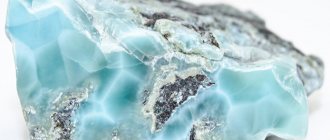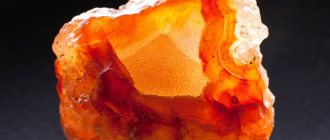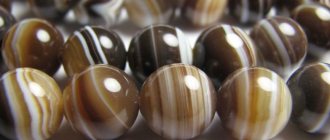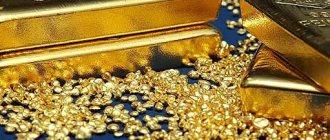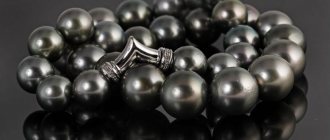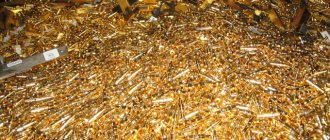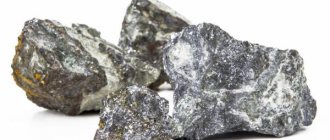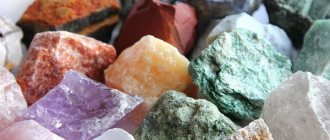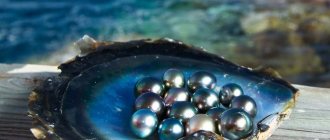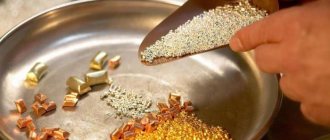All existing metals are divided into ferrous and non-ferrous. The first category includes iron and alloys based on it. In the modern world, non-ferrous metals are the most valuable materials used in production. Due to their advantages, they are widely used in those industries where a high degree of resistance to aggressive environmental conditions is extremely important.
Concept
Non-ferrous metals are substances that do not contain iron. They are usually used in the form of alloys. Due to their properties, they are very popular in leading industries: mechanical engineering, rocket, aviation, medical, electronics, instrument making, etc.
Non-ferrous metals are often various types of rolled products intended for subsequent production of products. Contrary to their name, they do not always have bright shades and a sparkling shine. However, all non-ferrous metals are valuable materials.
There is no clear classification; most often they are conditionally divided into the following groups:
- heavy;
- lungs;
- small;
- alloying;
- noble;
- rare.
Each group contains many names of substances that have different costs. For example, at a non-ferrous metal collection point, a kilogram of copper scrap is bought for an average of 300 rubles, and silver - 7-30 thousand rubles (depending on its category).
Recycling of non-ferrous metal
Used non-ferrous metal is not disposed of for many reasons.
Recycling is profitable
Primary production of non-ferrous metal (from ores) is a costly, labor-intensive, environmentally problematic process. Therefore, it is natural for enterprises to strive to optimize costs. That is, to recycle non-ferrous scrap metal. The cost of the process is five times cheaper than processing primary raw materials.
Recycling non-ferrous metal scrap is beneficial: the company saves money while avoiding fines for environmental pollution.
Non-ferrous metal distributors also receive good money. Therefore, industrial enterprises have developed the practice of storing such scrap metal for delivery to a collection point or metallurgical plant.
What kind of scrap is taken for recycling?
Scrap metal is divided into two types:
- Household – housing, parts of used household appliances, gadgets, cables.
- Industrial – equipment that cannot be repaired, worn-out structural elements, shavings, other waste, production rejection.
Aluminum, copper, nickel, lead, zinc, tin, and titanium scrap are suitable for processing. Plus alloys (bronze, brass), mixed scrap.
Extraction and processing
Obtaining valuable substances is a labor-intensive and economically expensive process. Their content in the earth's crust is insignificant and in their pure form they are extremely rare.
After mining, the ore is sent to a non-ferrous metals plant for processing. Despite the complexity of the beneficiation processes and subsequent production of blanks, in a number of properties all types of non-iron materials have no analogues, which explains their popularity.
The method of processing non-ferrous metals depends on the substance from which they are composed. The main technologies include:
- pressing;
- punching;
- rolling;
- drawing;
- forging.
Application
Many may wonder why these materials are so expensive. And having obtained a gram of precious metal, what can you do with it in practice? The answer is simple: without certain skills and equipment - nothing.
Thus, palladium is used for minting souvenirs and collectibles, which are a means of investing capital. But for more practical purposes, it is used to create medical equipment. Ruthenium is useful as one of the elements for water purification, and iridium strengthens alloys for products that will be exposed to incredibly high temperatures.
Many of the non-ferrous metals are used as a means of earning and preserving capital, participating in market trading both on very official exchanges, and as one of the means for shadow transactions and mutual settlements.
Heavy non-ferrous metals
This group includes:
- copper,
- lead,
- zinc,
- nickel,
- tin.
Copper is a golden-pink metal with a high ductility rate. Its main property is electrical conductivity, due to which it is used mainly in instrument making and radio electronics. In addition, copper has remarkable corrosion resistance and is easy to process. In combination with zinc it forms brass, and with other elements it forms bronze.
Lead is a toxic, gray metal. Despite its properties, it is extremely in demand in the automotive, weapons and medical industries. Lead has a low melting point (327°C), it is malleable and can be easily rolled into thin sheets. Its compounds are added to fuel to improve the quality characteristics of the latter, but at the same time, during vehicle operation, exhaust gases significantly pollute the environment.
Zinc in its pure form is a blue-white metal. When interacting with air, its surface becomes dull due to the appearance of an oxide film. In terms of volume of use in leading industries, zinc ranks 4th.
Nickel is a silvery-white metal. Plastic, which simplifies the processing process. Is ferromagnetic. Often, nickel is used in the form of alloys with steel, iron, chromium, gold, silver, magnesium, etc. In its pure form, it serves as a material for the manufacture of pipes, sheets, spirals, etc.
Tin is a white or gray metal that darkens as it turns into a powder. It has a low melting point (232°C) and good ductility even when cold. In combination with bismuth and cadmium, tin is used to produce reliable fasteners.
Physical properties
The characteristics of brass depend on additional alloying elements added to improve process parameters. For example, the density value varies in the range of 8300-8700 kg/m3.
The main physical properties of brass are:
- the specific heat capacity when heated to 20 C is 0.377 kJ kg−1 K−1;
- electrical resistivity 0.07*10−6 Ohm m;
- is not ferromagnetic and does not acquire magnetic properties when exposed to critical temperatures;
- the melting point averages 900 degrees;
- high resistance to corrosion and destruction;
- durable;
- plastic,
- good for forging and processing;
- resistant to temperature changes.
Brass, as a conglomerate of several metals, has a weak conductivity of electric current. Composite metals create distortion in crystal lattices. The resulting voltage fields form the resistivity. Copper itself is an excellent conductor of electric current, which is why all wires are made of copper.
The melting point of brass alloy depends on the percentage of zinc. The more zinc, the easier it is to melt brass.
Rolled brass metal is well suited to arc and gas welding. Well polished and rolled. Resists weathering better than pure copper.
Additions of bismuth and lead to a brass alloy reduce the elastic properties of the metal, making it brittle when exposed to high temperatures (at 500 degrees).
Light non-ferrous metals
Examples of substances belonging to this group:
- aluminum,
- magnesium,
- titanium.
Aluminum is the leader in mining and production volumes throughout the world. It has high electrical conductivity, which decreases due to the addition of various impurities. Difficult to weld, but easy to process in other ways. Aluminum alloys are widely used in the aviation, rocket, mechanical engineering, and chemical industries. The characteristics of the material, combined with its low cost, make it one of the most popular. For example, at a non-ferrous metals collection point, a kilogram of aluminum is bought for 35–90 rubles.
Magnesium is a silvery-white substance. The oxide film of the metal is quite resistant to aggressive environmental influences; its destruction occurs when heated to 600°C. At the same temperature, magnesium burns at an astonishing rate. It is mainly used in the military industry and in the production of pyrotechnic products. In the form of alloys - in the automotive and aviation industries.
Titanium is a very refractory substance with increased strength and resistance to deformation. Its peculiarity is its paramagnetic property. In its pure form it is used for the manufacture of various workpieces, in the form of alloys - for the production of parts and mechanisms of increased strength and wear resistance.
Chemical properties
The structure of brass is formed by two classical components - zinc and copper. In the traditional version, the share of copper does not exceed 70%, and zinc – 30%. Several grades of technological brass have been developed, in which the zinc content is lower, only 48%. In the metals industry, nearly half of all zinc used is recovered from waste and recycling.
There are two types of brass, with differences in internal structure and chemical composition:
- alpha type (single-phase), zinc content 35 percent;
- alpha-beta type (two-phase), in an alloy of 50% zinc and 6% lead.
In terms of external characteristics, brass is similar to some brands of bronze, but does not belong to bronze materials.
Special grades of brass alloys contain small amounts of tin. It is used as an alloying component to improve the properties of the metal. In addition to tin, the chemical composition of brass may contain lead, nickel, manganese and other metals that can improve the characteristics of the material.
Small non-ferrous metals
These include:
- antimony,
- mercury,
- cadmium.
Antimony is a silvery-white metal with a bluish tint. An extremely fragile substance that can be crushed even with your fingers. It is used in the form of alloys, significantly increasing the hardness of the metal connected to it. In addition to industrial use, antimony is also popular in the medical industry - it is effective for treating inflammatory diseases of the mucous membrane of the eyes.
Mercury is a metal that has a liquid state of aggregation. It has been used for many years in the medical industry (thermometers) and advanced technologies (position sensors, ion engines).
Cadmium is a white substance with a bright metallic luster. Along with increased hardness, it is easy to cut with a knife. Its properties are similar to mercury and zinc. In its pure form, it is poisonous to any living beings.
Alloying non-ferrous metals
Examples of substances in this group are:
- tungsten,
- molybdenum,
- vanadium,
- cobalt.
Tungsten is a silvery-white metal that resembles platinum in appearance. It is one of the most refractory and dense substances. It is used in the production of cutting tools (including medical ones), ammunition, jewelry, aircraft and missile parts.
Molybdenum is a soft, silvery substance that is not found in nature in its pure form. In terms of strength, it is slightly inferior to tungsten, but is easier to process. It is mainly used in the aviation and missile industries.
Vanadium is a silvery-white metal characterized by high ductility. It is rarely used in its pure form; its main purpose is to increase corrosion resistance and improve the mechanical properties of steel used in the automotive industry.
Cobalt is a silvery substance with a yellowish or bluish tint. Alloys based on it are used for the production of tools and parts of medical equipment.
Category: question - answer
What causes allergies to white gold?
Expert opinion
Kibantseva Elena Anatolyevna
Allergist-immunologist, “Movement” clinic, Saratov
The precious metal is absolutely hypoallergenic. An allergic reaction can only occur if low-quality impurities, such as nickel, are present. Rashes can also be the result of a skin reaction to detergents. During water procedures and cleaning, jewelry must be removed. Characteristic marks may remain due to increased sweating and hormonal disorders. Redness often appears on the hands, on the places of bracelets and rings. Perhaps the jewelry is simply small in size and rubs the skin.
Is it possible to wear yellow and white gold at the same time?
Expert opinion
Maria Baranova
Fashion designer
If you wear jewelry made from different types of gold together, then nothing bad will happen, the main thing is to do it stylishly. In addition, paired jewelry is made from both alloys. For example, it is not forbidden to wear a white cross on a classic gold chain, although it looks inharmonious.
Noble non-ferrous metals
These include:
- gold,
- silver,
- platinum.
Gold is a chemically resistant metal. The oxidation process does not start even when it is molten. Only a mixture of hydrochloric and nitric acids (“regia vodka”) can dissolve metal. It has high viscous properties and is easy to process. On the non-ferrous metals exchange, gold is highly valued - the price for 1 gram is 2,450 rubles.
Silver is a malleable and ductile metal. It has very high thermal and electrical conductivity. Despite its ductility, it is very refractory. Does not oxidize under the influence of oxygen.
Platinum is valued above all else among jewelers and is used in its pure form. It has excellent anti-corrosion properties and high resistance to any chemicals and deformations. At the collection point for non-ferrous metals, 1 gram of platinum scrap is bought for 1,600 rubles.
All that glitters is not gold
Gold is the metal most famous among non-ferrous metals. This is not surprising; its popularity is so high that for a long time it was used to pay for goods, it was the basis for a variety of jewelry and, by and large, became a kind of measure of people’s well-being. Several decades ago, payments between countries took place precisely in gold equivalent, and even now the gold and foreign exchange reserves of the budget of any state are an indicator of the level of the economy in general and the wealth of the population in particular.
In addition, gold is a rare metal, but easy to process. Its main advantage is its excellent malleability, thanks to which jewelers create beautiful jewelry and products from the yellow material. However, there is little pure gold in nature, and it is very difficult to mine; therefore, various additives are often added to it, which somewhat change the color and softness of the gold in the final result. The list of non-ferrous metals is varied, and each additive is used for different purposes, the main materials are:
- copper;
- silver;
- nickel;
- platinum;
- palladium;
- zinc.
Each of these metals changes the original color of the resulting material, which can have a greenish, pink, or white tint. The strength of the mixed metal is also important, because gold itself is so soft that it can be easily scratched, cut with a knife with proper force, or bitten with a tooth. All these methods are a simple and accessible way for everyone to test the authenticity of a product.
In addition to the jewelry industry, gold is used in the chemical industry, electronics, space and aircraft construction, and in oil production.
Rare non-ferrous metals
Examples of substances included in this group:
- niobium,
- tantalum.
Niobium is a gray metal with a bright steely sheen. It has paramagnetic properties and has a very high refractoriness index. Widely used in the aviation industry and radio engineering.
Tantalum is a silver-colored substance with high hardness and density. Despite this, it is easy to process. Used in the metallurgical, chemical and nuclear industries.
Production methods
Brass is one of those conglomerates that lend themselves well to processing methods - forging, stamping. At a low melting point, the metal exhibits good fluidity properties, due to which it is widely used in foundries.
When melting brass, zinc actively evaporates.
In the metallurgical industry, brass is mined in special refractory containers (crucibles) and in smelting furnaces, in which heat is transferred by radiation from the gaseous products of fuel combustion. In furnaces, melting occurs in a short time and with economical energy consumption.


